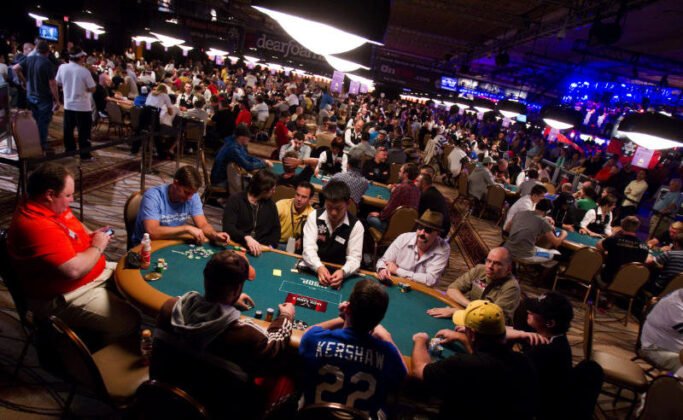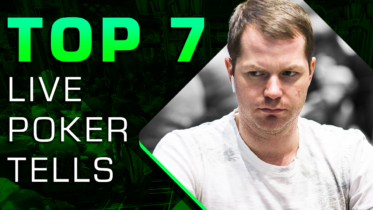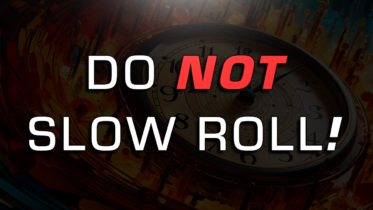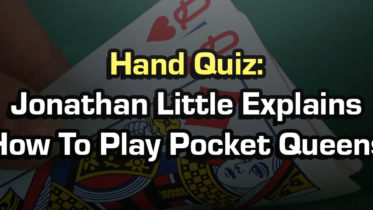Tournaments are wildly popular because they’re thrilling and offer a massive payout for a small buy-in. To experience the consistent thrill of victory, playing the right format will give you an edge over your competition. (Follow this link if you’ve yet to read part one!)
Considerations For Choosing The Ideal Game
Maximize Your Hourly Rate Or Your Potential Payoff?
If your goal is to make consistent profit or to maximize your hourly rate, then you’ll want to play a poker format that attracts beginners or casual players, like satellite tournaments or sit’n’go’s.
Expected ITM (In The Money)
If you want consistent wins, you’ll want to play smaller field sizes so you can get more ITM finishes and wins.
10 Handed Tournament – 30% ITM – 10% 1st Place
You’ll reach the money 30% on average if you’re playing proper tournament poker and you’ll win the tournament 10% of the time.
6 Handed Tournament – 33% ITM – 16.7% 1st Place
The top 2 spots pay, with a 33% ITM finish and 16.7% chance of coming first. The same goes for spin-and-go tournaments where the winner takes all. In heads-up sit’n’go’s it’s a 50% ITM finish.
6000 Person Tournament – 10% ITM – 0.0167% 1st Place
Preliminary events like WSOP, the field size is 6000 players with an expected ITM of 10% and a 2000-to-1 chance of victory. To meet your ROI you’ll need a high finishing spot; the same with main events.
100 Player Tournament – 10% ITM – 1% 1st Place.
You’ll reach the money 10% of the time and place first, 1% of the time.
Field Size
If your goal is improving your game, stick with smaller scale tournaments as you’ll gain more shorthanded experience. With larger fields (1000+ players) you’ll rarely play shorthanded or reach the final table; thus, you won’t gain much experience in tough situations.
If your goal is getting a game-changing score then large field MTTs, especially those with many satellites running (which means a weaker field) improve your odds of an ITM finish. The 1st place and final table finishes are massive compared to the entry fee.
Blind Speed
What’s Your ROI?
Slow blind structures develop your skills and allow you to play deepstacked poker. The downfall is your mistakes are more costly. While a faster blind speed weeds out weaker players as they’re more likely to make mistakes in their shortstack game. Playing slower blinds gives you an edge and ensures a ROI.
Regular, Slow, Turbo, Hyper
There are various blind speed tournaments available, ranging from slow to regular to turbo and hyper.
How Many Games Per Hour?
If you can manage two games per hour by playing faster blinds, you’ll get at least a 50% ROI than in regular or deepstacked tournaments. You’ll make more per hour despite making less per game. The smaller the gap in expected ROI between the slow, regular, turbo and hyper-turbo structure, the more pronounced this return will be. You can play more games an hour with hyper-turbos and turbos with only a small decrease to your ROI.
Further Consideration For Choosing The Ideal Game
Online poker sites, like PokerStars offer a rich selection of tournament choices for every skill level. Use these four questions before every session to determine which is the best format for you to play that day.
What Are Your Strengths?
Deep or Shallow Stacked?
Full-Table or Shorthanded?
How Much Time Do You Have?
Two key questions: how much time do you have and how long are you prepared to play your A-game for? Single table tournaments are under an hour. Full table is less than an half-an-hour and turbo or hyper end in 5-10 minutes.
Large Field – 12+ Hours
Hyper – 2 Hours
Turbo – 4 Hours
Regular – 6-8 Hours
Are You Loose Or Tight?
Early/Big Antes vs. No Antes
Does your biggest edge come from playing weak hands better than your opponents in wide ranges or being more selective and patient? For strong loose aggressive players, no limits tournaments with big antes or early antes are ideal. While strong tight selective players, playing deep-stacked slow tournaments with smaller antes or no antes are better.
What’s Your Ideal Buy-In?
How much can you afford, and is that enough to stimulate you? You don’t want to be overstimulated and stressed out, nor do you want to feel under-stimulated and unengaged. In multi-table if you’re bringing your A-game you’ll lose 80-90% of the time, so if losing negatively impacts you, play a lower buy-in rate or a smaller field (ITM average is 10%+). If you’re taking a shot, make sure the buy-in is easily recoverable.
In multi-table, the top spots are awarded prize money, and most of your cash earned from players fixated on winning and getting ITM. The opposite rings true in single table sit’n’gos, where the difference between cashing and winning is small. The payout structure is important in determining your strategy and whether you should focus on cashing or winning.
Tournament Poker Selection
Tournament poker is huge, but if you want to get ITM knowing which formats suit your current style of play will give you an edge. As you grow as a player, your optimal tournament will change, so use the short questionnaire before every session.



